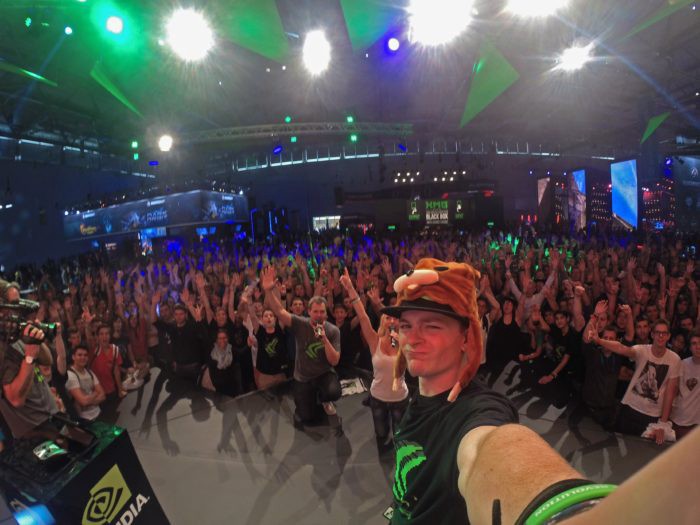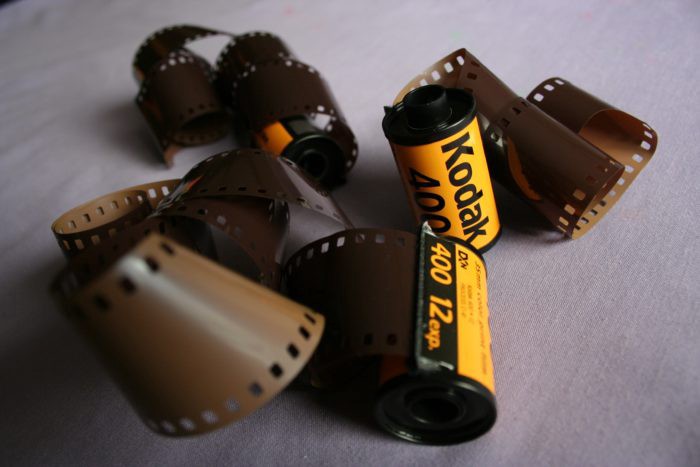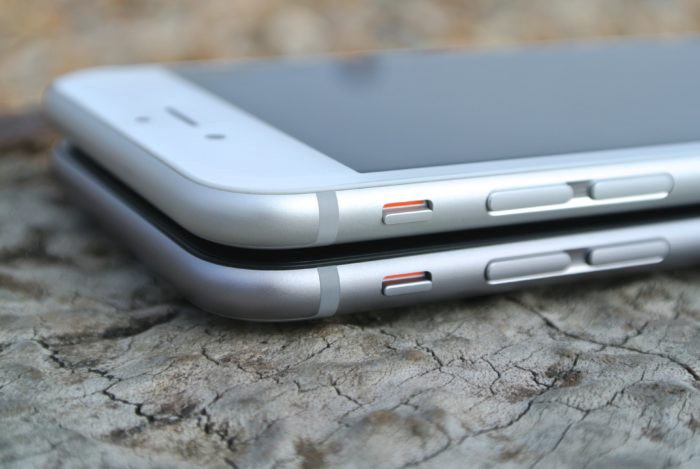January 31, 2018 by Ed Kennedy
What Does GoPro’s Decline and Kodak’s Comeback Mean for the Future of Video?
Disclaimer: This article is informative in purpose and does not constitute financial advice. The author urges you to obtain professional advice before pursuing any financial investment.
January saw two particularly big stories in the world of cameras. Stories that would have been laughable just a few short years ago. The details of the stories is where the real significance comes in, but in just one sentence the stories at are their most scintillating.
This month GoPro announced plans to cut 20 percent of its workforce on January 8, as Kodak stock rose 147 per cent on January 9. Talk about your plot twists, eh?
Now, let’s be clear. The stories are not directly related to one another. Sure, the folks at GoPro may have thought till recently that Kodak were old dinosaurs. And OK, they may still be a veteran or two at Kodak who is still marveling at the Super 8, unsure what this GoPro fuss is.
Nonetheless, beyond the headlines these stories are related, and do speak to deeper trends. Let’s look at these a little more now.
Goodbye GoPro?

Cool people doing cool things with a cool camera. This is the public identity GoPro found success in.
Like what Tesla is to electric cars, GoPro has been to the camera industry. A name not only for a particular product, but a buzzword for the action camera industry as a whole. For years since its establishment in 2002, GoPro was riding high. At its June 2014 IPO, the company floated $24 a share, making its founder and CEO Nick Woodman a billionaire along the way.
On January 10 of this year, the share price had dropped to just $6.05, and predictions of GoPro’s untimely demise was writ large. GoPro has had some problems along the way. A few big ones especially.
While they largely pioneered the action camera market – and did wonders marketing it with unforgettable ads – competitors were chasing them down. Sure, no competitors were able to rally the rivalry to the level of a Apple vs Android, or even a Coke vs Pepsi, but each chipped away at the market share of the company from San Mateo, California.
Then there was the Karma. UAV’s (AKA drones) had been on the rise alongside GoPro, and GoPro recognised the need to get something up in the air that was good for GoPro business. The Karma proved a PR disaster, being prone to lose power and drop out of the sky. It was ultimately re-released after a recall, before GoPro said in 2018 they’d stop selling the drone.
More widely, GoPro also committed two big sins. The first was a failure to innovate. Really innovate. Sure, nifty things like higher resolution and touchscreens were added from one model to the next, but there was no ‘giant step for mankind’. No indication GoPro planned to try and go one better on the waves they made when ushering the action camera into the market.
Then there was also the question of cost. While GoPro cameras were undoubtedly great devices, they were also expensive. With its most recent model the premium Hero Black 6 costing $499USD, the price was hefty for a new buyer, and a disincentive to many GoPro fans who would otherwise upgrade from one camera to the next year by year.
The announcement GoPro would cut the price of its premium camera by $100 for the Christmas sales period this year awarded the company with a spike in sales. But also the question ‘why the hell didn’t you do this sooner?’. Of course, more money was a reason not to, but the decline in share price was a long time trend that means the price cut, and other advents like an entry-level camera may have come too little too late.
Hello Kodak

When this type of film was popular Kodak was REALLY popular.
Talk about a Kodak moment. The Kodak team really took to heart the adage ‘New Year, New Me’, and went all out on beginning 2018 with a bang. The company that sold its first cameras in 1888 announced to the world it was getting into the business of blockchain and cryptocurrency. Some celebrated, others were skeptical, but everyone agreed this was a big pivot from Kodak.
True, there had been rumblings of change in years prior. The announcement in early 2016 Kodak was to release a digital version of its beloved Super 8 camera generated renewed interested in the brand. The timing was perfect – as while longtime fans may say this latest era began with JJ Abram’s 2011 sci-fi movie Super 8 – the era of 80’s nostalgia led by Netflix blockbuster Stranger Things has meant it’s a great time to make the old new again.
Just the same, reworking a vintage icon for a new era is one thing. Signifying your intend to be an industry leader once again, another. That’s what Kodak has done in announcing KODAKOne, their new blockchain-based “image rights management platform”.
In a nutshell (and for the benefit of those readers who are yet to feel they’ve a real grasp on blockchain technology), Kodak One would provide a digital ledger of photography rights, underpinned by use of blockchain to provide a more secure, reliable, and transparent way of establishing the intellectual property rights of imagery.
Done in partnership with WENN Digital, this is a licensing partnership that could see Kodak go from photographic history to the cutting edge of visual tech.
Photographers who utilise this tech would be able to register the date their image was created, and thereafter refer back to it as a way of proving ownership, and guarding against the unlicensed use of an author’s copyrighted images without their permission. Sure, there have been ways to do things like this before, but blockchain’s unique features means it’s a game changer.
This is good press, but for all its rich history Kodak has some significant blots on its record. The company credited with first inventing the digital camera did little to advance it, and ultimately was profoundly outpaced by the rise of digital photography as a whole.
How Kodak approaches this opportunity will depend in part on how it approaches its history. It will either repeat the same mistakes, or use it as motivation to not repeat the same mistakes again. Getting left behind by digital is one thing, getting left behind again when it has sought to be a leader in blockchain is another.
Nonetheless, for now, there is potential. This has been reflected on Kodak’s share price. The announcement of its new product saw it’s share price rise to $11.90. Good stuff. While it is no comparison to the highs of $94.75 seen in 1997‚ considering October 2011 saw it hovering around 78c [check source for info surrounding this date] once the smartphone camera revolution had well and truly began‚ it’s a big improvement. Now Kodak will need to hold it and build on it.
It may do this with the KodakOne, but its Bitcoin machine has already been subject to much skepticism and critique. At a cost of $3400 USD to rent, the KashMiner (ran by the company Spotlite, under the Kodak license) is said to produce $375 worth of Bitcoin a month over a period of two years. The problem is this figure is measured at current Bitcoin market rates.
Sure, Bitcoin could skyrocket! – but also go down. And anyone using the machine will have to still pay rent. Kodak knows this, but isn’t to keen on broadcasting it. It’d cause a ton of mess in the marketing department to try – but all of this just shows the ‘wow factor’ behind the machine isn’t there. Given the rich history this company holds, that in and of itself is a problem.
In tandem to this, there is the recognition to that Kodak has hopped on the blockchain and Bitcoin train at a time where many individuals and businesses are reaping the rewards of the rapid surge in interest of the two.
There are many advocates who say both Bitcoin and blockchain will continue to grow, others who say it’ll only be blockchain, and others still who say the crypto market is a huge bubble waiting to burst (so while separate technology, interest in blockchain will also suffer as well if that happens). Whatever the case, its undoubted the benefits of timing are real for Kodak.
But Let’s be Smart about This…

Here comes trouble…
Beneath the experience of GoPro and Kodak is an underbelly. An issue that is yet to be detailed, but may ultimately prove most consequential to the future of both businesses: the smartphone.
While GoPro was busy leading the action camera market, and Kodak dreaming of ways to return to the centre stage, smartphone cameras has been getting better and better each year.
Kodak has danced with this devil before. The rise of digital photography and mobile photography was the near-fatal wound to the classic brand. That in the face of modern tech it couldn’t shift beyond its old world ethos. For GoPro though, it was about sticking their finger in the damn. How long until smartphones could match the action camera in performance?
Optimistic shareholders – doubtless pondering the market price each morning while surfing a barrel or skydiving to start their day – may have felt the dam could hold for a while yet. But then suddenly phones could shoot 4K footage. They were waterproof. They had selfie sticks.
High quality film, durability, and accessories. At a time each of these were key selling points of GoPro. Then the new age of the smartphone swept in.
More widely, while the greater demand for video content would appear to be in GoPro’s favour, in practice the devices have not been as user friendly as smartphones and other cameras. Yes, more professionals and businesses than ever before may seek to integrate video content.
But GoPro’s turbulent editing software, and its signature but divisive fisheye lens, meant few videographers would make a GoPro their first choice when looking to shoot footage outside the action realm.
Where do they go from here?
GoPro has confirmed it is open to selling, and being brought out by a bigger business. This as well as indications by Woodman GoPro will be profitable again in the second half of 2018. Whatever ultimately happens it is clear this is the end of a chapter for the business. A newer, better chapter could yet lie ahead, but it will learn its lessons from this one.
Kodak by contrast is just gearing up for its most exciting period in years. The potential for a brand that once dominated the camera market to make a splash again has many camera fans delighted. Nonetheless, even the biggest fans should keep a lid on proclamations ‘Kodak’s back’ for now. Blockchain’s potential is real, and its idea is a good one. Its bitcoin idea is far more questionable. If both are to be ran via the same business, you’ll have your doubts accordingly.
So what does this mean for the future of video?
The gap between professional cameras and smartphones will continue to shrink. The erosions of GoPros stock price is a high profile example of this, but other cameras like point and shoot compacts and DSLRs are also threatened. For now the divide between what a regular smartphone can do and a regular DSLR can do remains significant, but it will continue to shrink.
While a decline may be seen here, the editing and after effects industry will continue to grow. This is seen on an intro level with the simple edits photography apps like Instagram and Snapchat allow you to make to photos and video clips. It is seen more widely by the increasing availability and quality of professional editing software like Adobe on mobile and tablet devices.
It is this growth and market that is set to be the real story of photography and visual content in future. Every person on earth could be given a HD 4K smartphone to capture images with. Turning those images into impactful and actionable content will invariably require images.
In time ahead, the entrepreneurs and developers who continue to shrink this divide could make a very tidy profit. Sure, the Facebook-owned Instagram, Snapchat, and other heavy hitters like Google with their free photo storage will lead the drive forward in the post-pic market.
But that one guy or girl who makes big editing on a little device easier than ever before? They may just have in their hands the next ‘killer app’.
Ed Kennedy is a journalist and ghostwriter from Melbourne, Australia. Contact Ed via enquiries@edkennedy.co on Skype or LinkedIn.